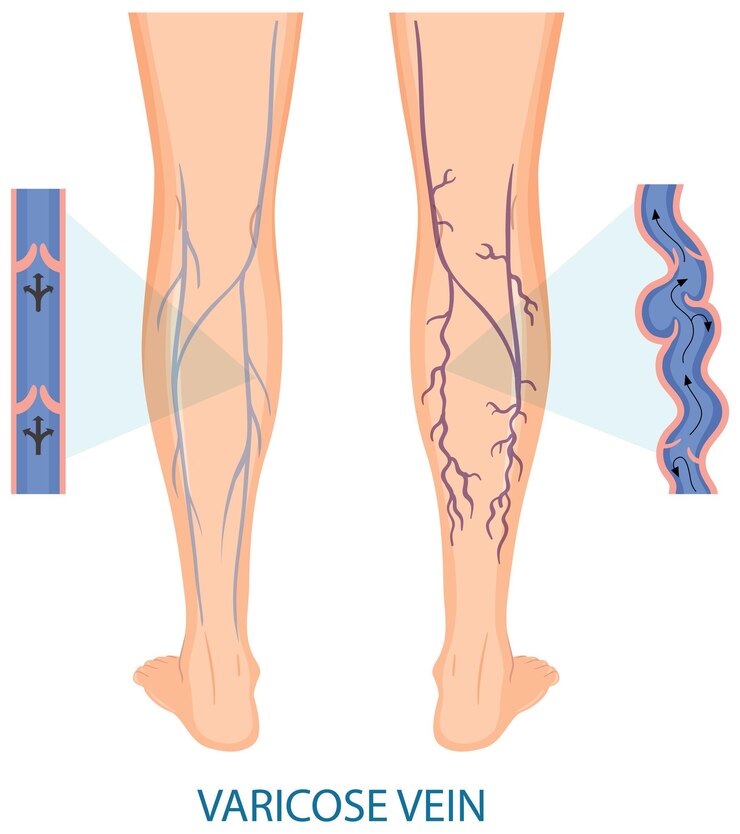
Varicose veins are enlarged veins that often appear blue, red, or flesh-colored. They usually look like twisted, bulging cords that can rise above the skin’s surface. While they are most commonly found on the thighs, calves, or inside of the legs, they can also appear around the vagina and buttocks during pregnancy.
For many, varicose veins can cause embarrassment and self-consciousness, especially when they are visible. While the appearance of these veins can be less bothersome in areas typically covered by clothing, those with highly visible veins often struggle with feeling uncomfortable in their own skin.
Women are more affected by varicose veins than men, largely due to difference in muscle mass. Men’s more muscular legs support better blood circulation, helping prevent the condition. Varicose veins occur when blood flow from the legs to the heart is compromised, causing the veins to swell and become inflamed. For many, this is a recurring issue that tends to appear more significantly during pregnancy. While pregnancy-related varicose veins may resolve on their own, they often require treatment to improve.
Beyond appearance, some people experience pain and discomfort in the areas where the veins are enlarged. Sometimes, varicose veins may also indicate deeper circulatory problems, especially if there is a family history of related issues. If this is a concern, it’s important to consult a doctor for a full evaluation.
During a consultation, your doctor will examine your legs to assess the affected areas. They might map out the varicose veins on a diagram and check for signs of more serious issues, such as swelling, skin changes, or ulcers. If significant concerns are detected, you may be referred to a specialist. For treatment to be effective, any deep vein problems must be addressed first.
Varicose veins can be treated in various ways. Sclerotherapy, a common method, involves injecting medication directly into the veins using fine needles to reduce visibility. Laser treatments are another option for minimizing the appearance of these veins. However, for many, these options may not always seem practical or affordable.
Surgery, often considered a last resort, is used in severe cases when other treatments fail. The procedure, known as vein stripping, involves removing the affected veins through incisions. It requires anesthesia and carries risks such as complications from surgery and multiple procedures, depending on the severity. Because of these factors, non-surgical treatments are usually recommended first, as they pose fewer risks and can still deliver effective results.
If you decide to undergo a varicose vein procedure, your doctor will provide detailed preoperative instructions. On the day of the surgery, you may be advised to avoid using moisturizers, oils, or sunscreen on your legs. It’s also a good idea to bring shorts for the procedure, along with physician-prescribed support hose, and wear loose-fitting clothing for comfort on your way home. Afterward, you might notice some bruising or discoloration in the treated areas, which typically improves over a few weeks.